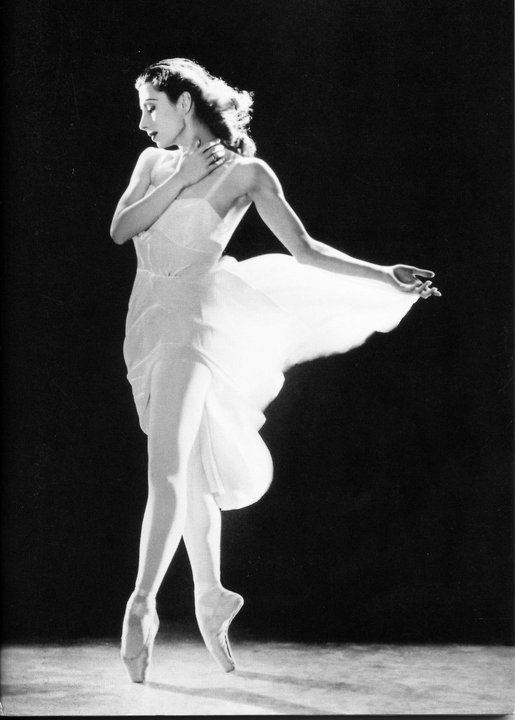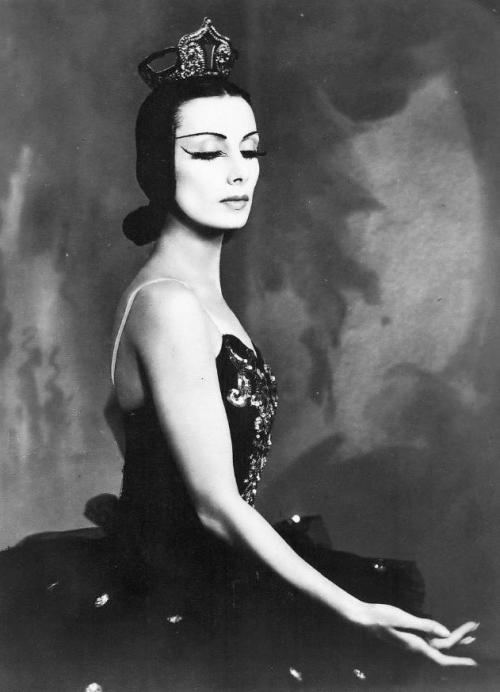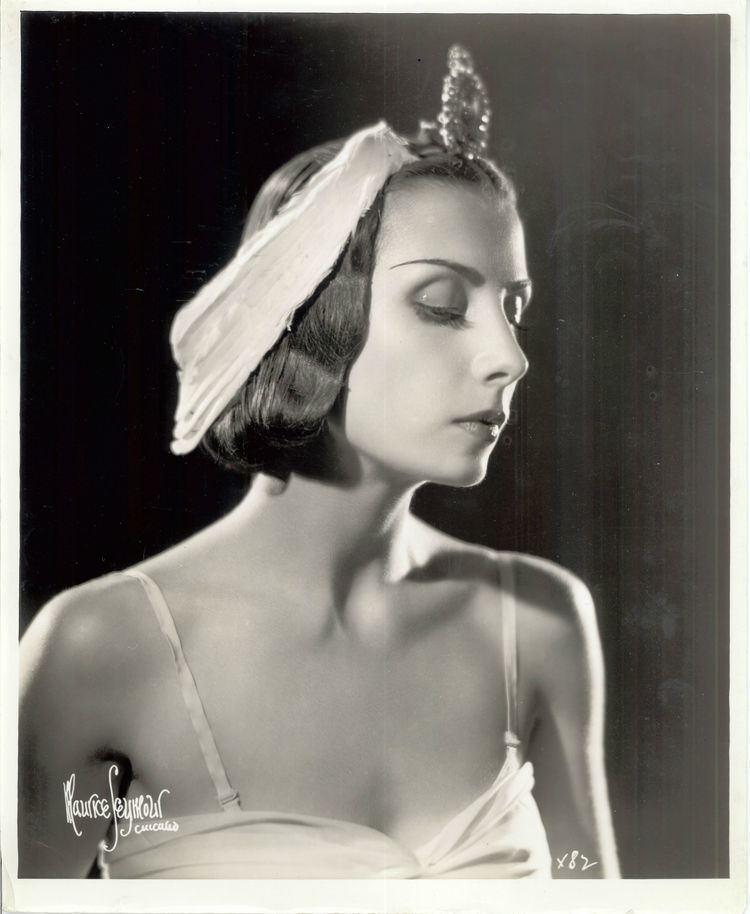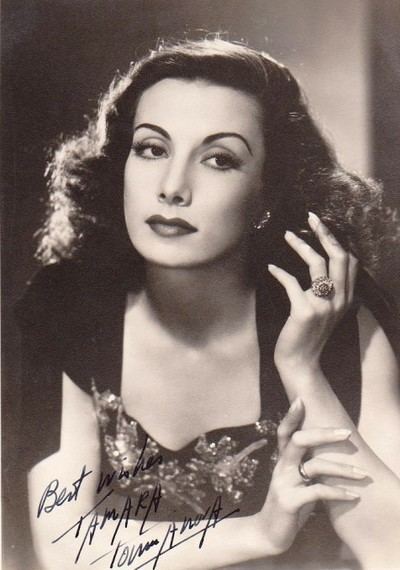Occupation Ballerina, actress Fields Ballet Parents Eugenia Tumanishvili | Role Ballerina Name Tamara Toumanova | |
 | ||
Native name Тамара Владимировна Туманова Full Name Tamara Vladimirovna Khassidovitch Movies Days of Glory, Torn Curtain, Invitation to the Dance, The Private Life of Sherlock, Deep in My Heart Similar People Casey Robinson, Jacques Tourneur, Daniel Barenboim, Gene Kelly, Billy Wilder | ||
Tamara toumanova excepts from swan lake
Tamara Toumanova (Russian: Тамара Туманова Georgian: თამარა თუმანოვა, Armenian: Թամար Թումանեան; 2 March 1919 – 29 May 1996) was a Russian-born American prima ballerina and actress. A child of exiles in Paris after the Russian Revolution of 1917, she made her debut at the age of 10 at the children's ballet of the Paris Opera.
Contents
- Tamara toumanova excepts from swan lake
- Tamara toumanova solo from don quixote
- Career
- Roles
- Toumanova on film
- Personal life
- Death
- Filmography
- References

She became known internationally as one of the Baby Ballerinas of the Ballet Russe de Monte Carlo, after being discovered by her fellow émigré, balletmaster and choreographer George Balanchine. She was featured in numerous ballets in Europe. Balanchine also featured her in his productions at Ballet Theatre, New York, making her the star of his performances in the United States. While most of Toumanova's career was dedicated to ballet, she appeared as a ballet dancer in several films, beginning in 1944. She became a naturalized United States citizen in 1943 in Los Angeles, California.

Tamara toumanova solo from don quixote
Career

Toumanova was the daughter of Yevgenia (or Eugenia) Dmitrievna Toumanishvili, who was half-Armenian, on her father (Dmitri Toumanov, originally Toumanishvili)'s side, and half-Georgian (on her mother, Yelizaveta Chkheidze)'s side.

At the time of her daughter's birth, Yevgenia was married to Konstantin Zakharov (a Russian). Both Tamara and her mother used the surname Khassidovitch (Yevgenia's second husband was Vladimir Khassidovitch (akas: Vladimir Khassidovitch-Boretsky/Vladimir Khazidovich-Boretsky) for most of their lives following the end of Yevgenia's first marriage, including on their paperwork for naturalization as citizens of the United States.

After moving to Paris, Toumanova was given piano lessons and studied ballet with Olga Preobrajenska, whom she described as her "first and only permanent teacher" and an "immortal friend".
At the age of six, Toumanova was invited by the ballerina Anna Pavlova to perform in one of her gala concerts in 1925. Toumanova danced a polka choreographed by Preobrajenska. Tamara was ten years old when she made her debut at the Paris Opera as a child étoile in the ballet L'Éventail de Jeanne (for which ten French composers wrote the music).
In 1931, when Toumanova was twelve years old, George Balanchine saw her in ballet class and engaged her for de Basil's Ballet Russe de Monte Carlo, along with Irina Baronova (aged 12) and Tatiana Riabouchinska (aged 14). The three girls were an immediate success, and writer Arnold Haskell dubbed them the "baby ballerinas".
Toumanova became recognised as a young prodigy of immense talent. She came to be called "The Black Pearl of the Russian Ballet", because, as ballet critic A. V. Coton wrote, "she was the loveliest creature in the history of the ballet", with black silky hair, deep brown eyes and pale almond skin. Toumanova was considered the most glamorous of the trio. Throughout her dynamic career, her mother was her devoted companion, nursemaid, dresser, agent and manager – she was always at the helm.
Balanchine created the role of the "Young Girl" for Toumanova in his ballet Cotillon and had her star in his Concurrence and Le Bourgeois Gentilhomme. Léonide Massine worked closely with Toumanova in the creation of many of his ballets. She played the part of the Top in his Jeux d'Enfants. Balanchine created a role for her in his Le Palais de Cristal (since re-titled Symphony in C) in 1947 at the Paris Opera.
In 1936, while Toumanova was performing ballet in Chicago, an 18-year-old boy named Burr Tillstrom came to see her perform. Following the ballet, Burr went backstage to meet her. As they talked, Toumanova and Tillstrom became friends. Some time later, Tillstrom showed her a favorite puppet he had made and she, surprised by his revelation, exclaimed, "Kukla" (Russian for "puppet"). Burr Tillstrom went on to create a very early (1947) television show for children, titled, Kukla, Fran and Ollie.
Roles
Toumanova on film
Toumanova appeared in six Hollywood films between 1944 and 1970, always playing dancers. She made her feature film debut in 1944, in Days of Glory, playing a Russian dancer being saved from the invading Germans in 1941 by Soviet partisan leader Gregory Peck (who also made his debut in that film).
In 1953 she played Russian prima ballerina Anna Pavlova in Tonight We Sing, and in 1954 she appeared in the biographical musical, Deep in My Heart, as the French dancer Gaby Deslys. In 1956 she performed a dance scene with Gene Kelly in Invitation to the Dance. In 1966, she played the odious, unnamed lead ballerina in Alfred Hitchcock's political thriller Torn Curtain. In 1970 she played Russian ballerina "Madame Petrova" in Billy Wilder's The Private Life of Sherlock Holmes.
Personal life
Some sources indicate that Tamara Toumanova was born Tamara Vladimirovna Khassidovitch in Siberia, while her mother, Princess Eugenia (later Eugenie) Dmitrievna Toumanova was fleeing Georgia in search of her husband (Vladimir Khassidovitch),).
Toumanova was of Armenian and Polish descent. Toumanova was reportedly also of partial Georgian descent, although singer Lyudmila Lopato, who personally knew Toumanova, wrote that "Tamara was of Armenian-Polish descent, not Georgian, as many people think". Toumanova's maternal grandfather Prince Dmitry Toumanov was a follower of the Armenian Apostolic Church.
Toumanova's parents had become separated during the Russian Revolution. She was 18 months old before the family reunited. The family escaped from Russia via Vladivostok.
In 1944, Toumanova married Casey Robinson, whom she met as the producer and screenwriter of Days of Glory, her first film. The union was childless. The couple divorced on 13 October 1955.
Death
Toumanova died in Santa Monica, California, on 29 May 1996, aged 77, from undisclosed causes. Before her death, she gave her Preobrajenska costumes to the Vaganova Choreographic Museum in St Petersburg, Russia. She was buried next to her mother Eugenie in Hollywood, Hollywood Forever Cemetery.
British choreographer John Gregory described Toumanova as a "remarkable artist – a great personality who never stopped acting. It is impossible to think of Russian ballet without her."
